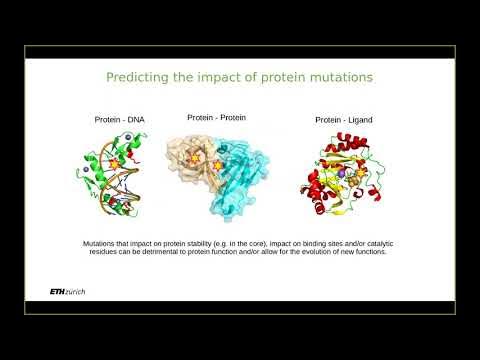Analogi dan Homologi Vertebrata
Summary
TLDRThe lecture focuses on the concepts of homology and analogy in vertebrate evolution. It discusses the gradual changes in species over time, influenced by environmental shifts. Homology refers to similarities in structure due to shared ancestry, while analogy involves similarities in function despite different evolutionary origins. The lecture emphasizes how evolutionary changes, evidenced by fossil records and embryonic development, illustrate adaptation and speciation. The professor also explains the concepts of divergent and convergent evolution, using examples like human hands and animal limbs, and highlights the role of these adaptations in species survival.
Takeaways
- 😀 Evolution is a gradual process of change in living organisms over long periods, leading to the emergence of new species with distinct traits.
- 😀 Homology refers to similar structures in different species that evolved from a common ancestor but have different functions, providing evidence for evolution.
- 😀 Analogy, in contrast, refers to structures that have similar functions but evolved independently in different species, also offering evidence for evolutionary adaptation.
- 😀 Fossils found in different geological layers provide important evidence for evolutionary processes, indicating that modern species evolved from ancient forms.
- 😀 Human evolution can be traced back through various species of early humans, with changes in brain size and other physical features, driven by environmental factors.
- 😀 Embryonic development in vertebrates shows similar early-stage structures, which evolve into distinct adult forms, further supporting the theory of evolution.
- 😀 Divergent evolution occurs when a single species evolves into multiple species with different characteristics, while convergent evolution results in unrelated species developing similar traits due to adaptation to similar environments.
- 😀 Charles Darwin's theory suggests that variations within species, influenced by environmental factors, lead to the evolution of new traits that help species survive and reproduce.
- 😀 The process of adaptation allows species to survive in changing environments, with physical and behavioral traits evolving to better suit new conditions.
- 😀 The study of vertebrate anatomy, including the comparison of homologous and analogous structures, is crucial for understanding evolutionary relationships and the diversity of life.
Q & A
What is the focus of the lecture in the script?
-The focus of the lecture is on the concepts of homology and analogy in vertebrates, which are essential for understanding the evolutionary processes of animals, especially vertebrates, over time.
What does Charles Darwin's theory of evolution emphasize in the script?
-Charles Darwin's theory of evolution emphasizes that living organisms undergo gradual changes over long periods of time. These changes lead to new traits, which over time result in the formation of new species.
What is meant by speciation according to the script?
-Speciation is the process by which new species are formed due to long-term evolutionary changes, often as a result of environmental changes. This process causes the emergence of species that are significantly different from their ancestors.
What evidence is provided for the theory of evolution in the script?
-The script mentions fossils found in different layers of the Earth as evidence of evolution, showing the existence of different life forms in different eras, supporting the idea of gradual changes in species over time.
How does embryonic development support the theory of evolution?
-Embryonic development shows similarities between different species at early stages. This shared developmental pattern supports the idea of common ancestry and evolutionary changes as organisms develop from similar initial stages to distinct adult forms.
What is the significance of variations in species, as discussed in the script?
-Variations in species, influenced by environmental factors, are crucial for adaptation. These variations lead to differences between individuals within a species, which can help them survive and thrive in different environments.
What is the difference between divergent and convergent evolution?
-Divergent evolution occurs when a single species evolves into multiple new species, whereas convergent evolution happens when unrelated species develop similar traits due to adapting to similar environments or ecological niches.
Can you explain the concept of homology as described in the script?
-Homology refers to the similarity in structure or origin of organs or body parts across different species, despite differences in function. It is evidence of common ancestry and evolution, as seen in the similar bone structure of human hands and animal limbs.
What is analogy in evolutionary biology?
-Analogy refers to the occurrence of similar traits or functions in different species that do not share a common evolutionary origin. For example, the wings of birds, bats, and insects serve similar functions for flight but have different structural origins.
How do evolutionary changes in animals' physical traits relate to their environments?
-Animals' physical traits evolve to adapt to their specific environments. Changes in structure or function allow species to survive better in new or changing environments, as seen in the evolution of vertebrate species over time.
Outlines

This section is available to paid users only. Please upgrade to access this part.
Upgrade NowMindmap

This section is available to paid users only. Please upgrade to access this part.
Upgrade NowKeywords

This section is available to paid users only. Please upgrade to access this part.
Upgrade NowHighlights

This section is available to paid users only. Please upgrade to access this part.
Upgrade NowTranscripts

This section is available to paid users only. Please upgrade to access this part.
Upgrade NowBrowse More Related Video
5.0 / 5 (0 votes)





